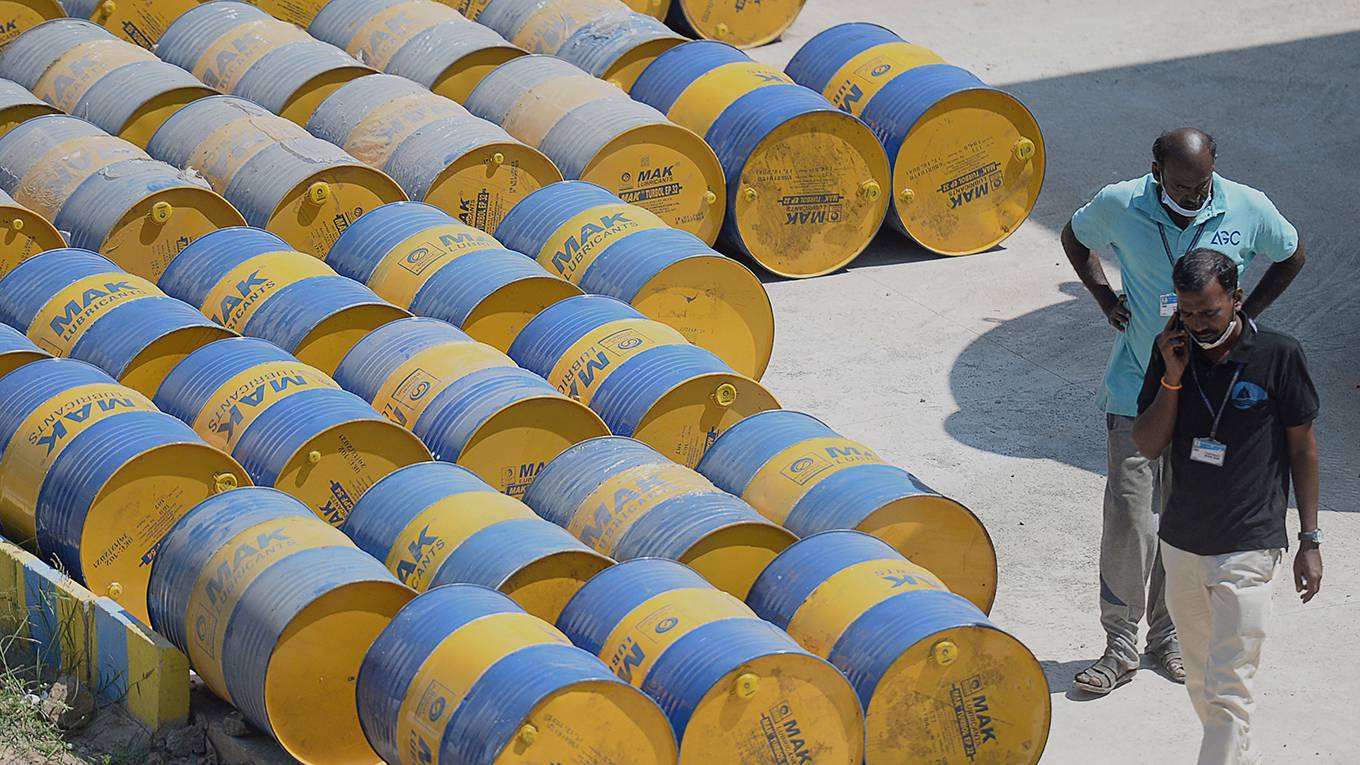SUSHANTA MALLICK, BRIGITTE GRANVILLE

LONDON – If there was a prize for the most quotable comment on international relations so far in 2022, Indian Foreign Minister Subrahmanyam Jaishankar would be in the running. Responding to criticism of his country’s neutral stance on the Russia-Ukraine war at a security forum in Slovakia in June, Jaishankar said that “Europe has to grow out of the mindset that Europe’s problems are the world’s problems, but the world’s problems are not Europe’s problems.
Like most major crises, the war is shedding stark light on our era, and India’s response to it is particularly illuminating. India’s current foreign policy does more than just exemplify how the conflict has intensified deglobalization trends. It also highlights the paradox inherent in the country’s increasing emphasis on “strategic autonomy” as the world fragments into rival power centers: the United States and its alliance system versus China and its major satellite, Russia. The essence of this paradox is that India’s quest for self-reliance – keeping its distance from the principals of Cold War 2.0 and seeking advantage from diverse relationships – entails multidimensional international engagement.
For example, European politicians painfully weaning their countries off imported Russian energy have criticized India for buying more Russian oil – after Western sanctions reduced its price by about a third relative to the world market price. Indian purchases of Russian crude increased to 1.1 million barrels per day (mbpd) by late July and now account for over one-fifth of Indian oil consumption, compared to just 2% last year.
The standard official Indian response is that, despite Europe’s extensive sanctions, the continent’s energy trade with Russia still dwarfs India’s. More tellingly, however, India’s purchases of discounted Russian oil are not only cushioning the blow to itself as a poor energy-importing country, but also helping to prevent even more economic pain for Europe. If the 4.3 mbpd of crude oil that Russia sold to the West last year (or six mbpd including oil products) had no alternative markets like India, the world oil price would be even higher.
Recognizing the importance of keeping Russian oil on the market, the G7 has now come up with an alternative sanctions strategy that could present India with its next big test. The West’s Plan A was to combine, by the end of 2022, a partial embargo on direct imports of Russian oil with an attempt to choke off Russian oil exports to third countries by leveraging Western (and especially British) dominance of the global marine insurance market.
Plan B is the so-called “price cap” mechanism. This would allow Russia to continue exporting oil but set a maximum price just sufficient to cover its production costs, thereby depriving the Russian state of any war-financing rent.
When the price cap scheme was first officially aired at the G7 summit in June, several leaders, notably German Chancellor Olaf Scholz, publicly questioned its viability – especially regarding compliance by third-party buyers of Russian oil. Even if Russia agreed to the cap, who would get access to its deeply discounted oil, and who would pay the full market rate? Russia would be much more likely simply to reduce output, hoping to offset its losses with the resulting further price surge for whatever residual oil exports evaded the Western insurance net.
Either way, India will be in a pivotal position. While Russia’s opaque oil sales to China will continue regardless, India can look forward to various arbitrage opportunities. It will continue importing substantial quantities of Russian oil at ever cheaper prices. And in the event that such imports weakened Western measures to squeeze Russia’s oil rents, the US would be unlikely to threaten – much less impose – secondary sanctions on India.
After all, successive US administrations – under Presidents Donald Trump and Joe Biden – have refrained from using their legal powers under existing legislation to place secondary sanctions on India for continuing to buy Russian weapons. The reason for this is clear: A closer security partnership with India has become a vital part of America’s China policy. Specifically, the Quad – an informal security grouping comprising the US, Japan, Australia, and India – has emerged as a cornerstone of US Indo-Pacific strategy, and would not survive the US sanctioning one of its members.
Of course, the US-India security relationship is mutual, given the live Chinese threat to Indian territory along the Himalayan Line of Actual Control – as the deadly June 2020 border skirmish showed. But India’s fear of China also implies a strategic dimension to its ties with Russia that goes well beyond opportunistic oil and arms purchases. India has an interest in keeping Russia close and not allowing a monolithic and estranged Russia-China Eurasian axis to loom over the Indian subcontinent.
India is playing this multifaceted game adroitly. In defense procurement, it has acquired advanced Russian S-400 air-defense systems and agreed to extend until 2031 the licensed local production of Russian weapons. But it has also increased arms purchases from NATO members, notably France.
Moreover, India has ample options for managing broader US sensitivities vis-à-vis Russia. For example, Russia urgently needs to replace industrial inputs that it previously imported from the West. This could provide further opportunities for Indian exports, which are already a third higher than their pre-pandemic level, owing in part to the government’s Atmanirbhar Bharat (“self-reliant India”) stimulus program for manufacturing. Increased Indian pharmaceutical and automotive exports to Russia need not involve military support of the kind that has already led the US to sanction various Chinese electronics manufacturers, as announced on June 28.
India’s relations with Russia are part of its nuanced and multidimensional foreign policy. This approach means that the upcoming 75th anniversary of Indian independence will coincide with the country achieving significant – and advantageous – geopolitical autonomy.
No comments:
Post a Comment